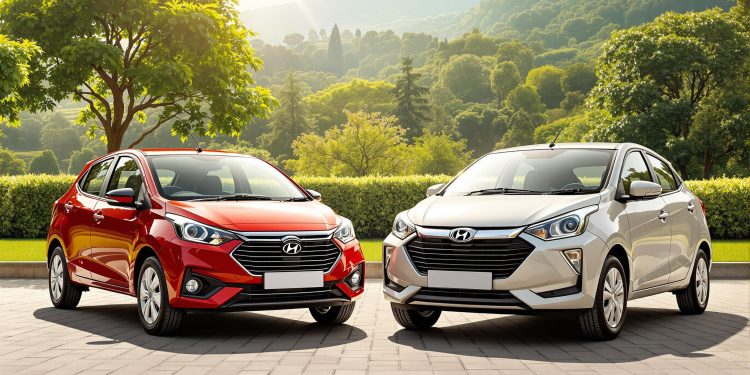Buying your first car in Rwanda? Here’s what you need to know:
- Used Cars: Cost less upfront (5M-20M RWF) but require more maintenance. Example: 2011 VW Golf (~6M RWF).
- New Cars: Start at 30M RWF, come with warranties, and have lower running costs. Example: Toyota Corolla Hybrid.
- Hybrids & EVs: Growing interest due to fuel efficiency and eco-friendly policies. Example: Used Prius (~8.5M RWF) or Tesla Model 3 for low charging costs.
Quick Comparison
| Factor | Used Cars | New Cars |
|---|---|---|
| Price Range | 5M-20M RWF | 30M+ RWF |
| Maintenance Costs | Higher (30% more) | Lower (warranty) |
| Fuel Efficiency | Moderate | Better |
| Depreciation | Lower absolute value | Higher first-year loss |
Key Tip: Used cars dominate Rwanda’s market (85%), but EVs are gaining traction with tax incentives. Factor in long-term costs like maintenance, fuel, and insurance before deciding.
New VS Used Cars: What You Need to Know Before Buying
Car Market Facts in Rwanda
Rwanda’s car market is largely driven by used vehicles, which make up 80-90% of the market share [7][8]. For first-time buyers, this creates a market with three distinct pricing tiers, heavily influenced by the country’s tax system.
Current Market Status: Used vs. New Cars
There’s a noticeable price gap between used and new compact cars. Used vehicles generally fall within the 5M-20M RWF range, while new models start at around 30M RWF [5]. For example, a 2011 Volkswagen Golf costs about 6M RWF, making used cars an affordable option for many [7].
Here’s a quick look at the current pricing:
| Category | Price Range | Example |
|---|---|---|
| Used Compact | 5M-17M RWF | VW Golf (2011) |
| New Compact | 30M+ RWF | Toyota Corolla Hybrid |
Tax Rules and Import Costs
Rwanda’s tax system relies on three key factors: EAC depreciation rules, VAT on imports, and registration fees.
Under the East African Community (EAC) depreciation rules, cars up to 8 years old can be imported [6]. This benefits budget-conscious buyers since import taxes are calculated based on the car’s depreciated value rather than its original price.
New cars, on the other hand, are taxed at full customs value, plus 18% VAT and registration fees. This makes them significantly more expensive upfront, though they may offer greater reliability over time.
The market is also seeing growing interest in hybrid and electric vehicles, thanks to government policies promoting greener options. However, hybrids remain a premium choice, with prices around 38M RWF – almost three times the cost of popular used compacts.
Cost Comparison: Used vs. New Compact Cars
Purchase Price Analysis
In Rwanda, the tax structure makes new compact cars a much bigger initial expense compared to used options. For instance, a new Toyota Yaris starts at about 30M RWF ($15,000), while a 5-year-old model costs around 18M RWF ($9,000) [2][9]. That’s a 40% upfront saving for those opting for a used car.
Take the example of a 1997 Toyota Carina E: though its post-depreciation value is 4M RWF, taxes add another 3.2M RWF, bringing the total to 7.6M RWF [10].
Running Costs Over Time
The real cost of owning a car goes beyond the purchase price. When it comes to running costs, new cars have an edge:
| Cost Category | New | Used (5+ years) |
|---|---|---|
| Annual Maintenance | Covered by factory warranty | 30% higher maintenance costs |
| Fuel Efficiency | 5.1L/100km (New Yaris) | 6.2L/100km (2015 Corolla) |
| Annual Fuel Savings | 180,000-240,000 RWF | – |
For used cars, common repair expenses include timing belt replacements (120,000-200,000 RWF) and brake system overhauls (80,000-150,000 RWF) [2].
However, programs like AUTO24.rw’s certified pre-owned option help reduce maintenance uncertainty. Buyers get a 12-month warranty and free first service, though this adds about 10% to the car’s purchase price [4].
Insurance Costs and Resale Values
Insurance expenses differ based on whether the car is new or used:
- New cars: 7-9% of the vehicle’s value annually
- Used cars: 5-7% of the vehicle’s value [6]
For budget-conscious buyers, the lower insurance costs of used cars can help manage expenses.
Now, let’s look at resale values after three years:
| Vehicle Type | Initial Value | Value After 3 Years | Total Depreciation |
|---|---|---|---|
| New Compact | 30M RWF | 16M RWF | 14M RWF |
| Used (5yo) | 18M RWF | 13M RWF | 5M RWF |
While used cars depreciate more in percentage terms, they lose less in absolute value (5M RWF vs 14M RWF) [9][2]. This makes them a more cost-effective choice when considering total ownership costs.
sbb-itb-7bc66b5
Buying Guide: Used vs. New Cars
Performance and Dependability
When comparing new and used cars, the price difference is obvious, but reliability is another key factor. New compact cars come with the advantage of manufacturer warranties. For instance, Toyota’s 3-year/100,000km warranty offers reassurance, especially for first-time buyers [2]. On the other hand, used cars in Rwanda, with an average fleet age of 15-20 years, often demand more maintenance and care [1].
Key Areas to Inspect in Used Cars
If you’re considering a used car, focus on these essential inspection points:
| Inspection Area | Target Values | Warning Signs |
|---|---|---|
| Engine Compression | Consistent pressure readings | Uneven readings |
| Transmission Fluid | Clear, red color | Burnt smell, discoloration |
| Frame Alignment | Professional alignment check | Signs of accident repairs |
Electric Vehicle Options
Electric vehicles (EVs) may have higher upfront costs, but Rwanda’s eco-friendly policies make them an appealing choice. EV imports surged by 145% between 2021 and 2022, reflecting growing interest [3]. The Tesla Model 3, for example, offers a 438km range, ideal for Kigali’s average daily commute of 35km [4].
Here’s a quick look at annual ownership costs for some EV and hybrid options:
| Vehicle Type | Annual Costs |
|---|---|
| Tesla Model 3 | 200K RWF charging |
| Used Prius | 2M RWF (800K maintenance + 1.2M fuel) |
| New BYD Dolphin | 200K RWF charging |
While EVs have lower yearly costs, their battery replacement every 8-10 years (5M-15M RWF) can outweigh the yearly maintenance for used internal combustion engine (ICE) vehicles, which ranges from 300K-800K RWF [3][4].
Choosing the Right Car for Your Needs
In Rwanda, crossovers are a budget-friendly option for rural drivers who need higher ground clearance. For city driving in Kigali, compact hatchbacks are great for navigating tight spaces [3].
However, if you’re eyeing a used car under 5M RWF, keep an eye on these potential hidden costs:
| Common Issue | Repair Cost |
|---|---|
| Catalytic Converter | $600+ |
| A/C Compressor | $400 |
| Timing Belt Service | $350 |
For longer trips, like traveling between Kigali and Cyangugu, traditional ICE vehicles remain a practical option due to the limited availability of charging stations [3].
5-Step Decision Guide
Financial Realities
Bank of Africa-Rwanda provides loans for 3 to 7 years, requiring mandatory comprehensive insurance for new vehicles. Interest rates for new cars usually fall between 12-15% APR, while used cars come with higher rates of 18-22% APR [5].
When budgeting, keep these financing details in mind:
| Vehicle Type | Down Payment | Monthly Payment (5-year term) | Total Interest |
|---|---|---|---|
| Used Nissan Navara | 5M RWF | 320K RWF | 3.7M RWF |
These numbers affect long-term ownership costs, which play a big role in deciding whether to buy new or used.
Understanding the total cost of ownership is key to managing risks wisely.
"Budget 15% of purchase price annually for used European models versus 8% for Japanese makes"
says certified mechanic François Niyonsenga [8]. This aligns with Rwanda’s repair network strengths.
Here’s how ownership costs compare:
| Cost Category | Used Car Impact | New Car Impact |
|---|---|---|
| Depreciation | 5-7% yearly | 20-30% in the first year |
| Insurance | 500K RWF/year | 800K RWF/year |
Note: Insurance rates typically range from 5-7% for used cars and 7-9% for new cars in Rwanda.
Used vs. New Cars: Quick Facts
In Rwanda, the choice between used and new cars is shaped by import duties and available models. New EVs enjoy reduced import duties of 10% + 18% VAT, while used cars older than 5 years face 25% import duty + 18% VAT [1].
| Factor | Used Advantage | New Advantage |
|---|---|---|
| First-year costs | 40-60% lower | Warranty coverage |
| Parts availability | Japanese models | EV incentives |
| Total 5-year cost | 18-22M RWF avg | 28-32M RWF avg |
Japanese models, like Suzuki Carry trucks, are particularly appealing due to 23% lower maintenance costs compared to the average [7].
AUTO24.rw enhances its reputation in the EV market with a certified pre-owned program. This includes 150-point inspections and structured payment plans for both traditional and electric vehicles.
Key Points to Remember
For first-time car buyers in Rwanda, understanding the local market dynamics is crucial. With used cars dominating 85% of the market [1], there are specific cost factors to keep in mind.
Used cars may save you around 40% upfront, but they often come with higher maintenance costs. According to UNEP data, imported used vehicles in Africa are typically 16-20 years old [11]. This trend matches Rwanda’s repair cost patterns for older cars, making it essential to set aside a larger maintenance budget and conduct thorough mechanical checks before purchasing.
Professional inspections are a must (as noted in the Buying Guide), but you should also plan for potential repair expenses. On the other hand, new electric vehicles (EVs) offer competitive pricing thanks to tax incentives. The government has reduced import duties to 10% + 18% VAT for EVs, making them an appealing option, though charging stations are still mainly available in urban areas.
If environmental impact is a concern, keep in mind that most used imports only meet Euro 3 emissions standards. Safety is another key factor – ensure pre-purchase inspections are thorough, and stick to regular service schedules.
For more insights into Rwanda’s growing EV infrastructure and certified pre-owned programs, AutoMag.RW is a helpful resource. Their platform offers updated listings, tax calculators, and expert reviews. They even provide flexible payment options for both traditional and electric vehicles, making it easier to navigate Rwanda’s changing car market.
FAQs
Do you get a better interest rate on a new or used car?
When comparing the costs of new and used vehicles, understanding loan terms is key. Interest rates often vary because lenders see older cars as riskier investments.
Here’s a quick look at car loan terms in Rwanda:
| Loan Aspect | New Cars | Used Cars |
|---|---|---|
| Interest Rate | 12-15% | 18-22% |
| Maximum Loan Term | 5 years | 3 years |
| Down Payment | 20% | 25-30% |
While used vehicles usually come with higher interest rates, the total loan amount tends to be smaller. For example, loans for used cars often range between 5M-15M RWF, while loans for new cars typically start at 20M RWF or more [12]. A used Toyota Corolla might cost about 250K RWF/month, whereas a new compact car could cost 450K RWF/month, even with lower interest rates.
Some banks provide special packages for first-time buyers, and programs like AUTO24.rw’s certified pre-owned option include warranty coverage, which can help offset the higher rates.
Related Blog Posts
- New vs. Used Cars: Cost Breakdown in Rwanda
- Best Websites for Buying Cars Online in Rwanda
- Top 7 Tips for Choosing Between New and Used Cars
- How EV Imports Affect Used Car Sales in Rwanda





